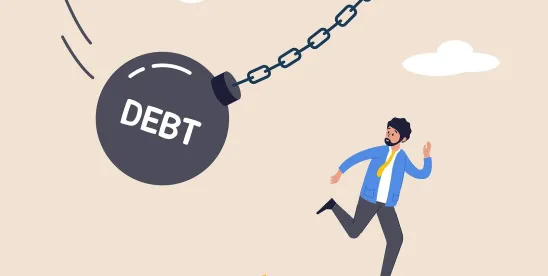For a lender in bankruptcy, the best situation is to be an over-secured creditor, meaning the value of your collateral exceeds your debt.
A creditor in this exalted category can recover principal, interest (including default-rate interest if the debtor defaulted before bankruptcy), fees, charges, tip, tax, you name it. A lender also may recover its legal fees, including legal fees incurred after the debtor files bankruptcy.
If a lender finds itself in this privileged position, then bankruptcy should be a mild nuisance. You need counsel to monitor the case, protect your interests, and ensure the debtor does nothing improper. But this is not a fair fight. You and the debtor are in different weight classes, and you should show restraint and fight by Queensbury Rules. Don't abuse your position. Or more precisely, don't let your lawyers abuse it for you.
A recent case from a Colorado bankruptcy court shows what happens when the lawyers for a fully-secured creditor go overboard. In Sirios Land and Cattle, LLC, Mr. and Mrs. Sirios owned a 4,200-acre farm northeast of Denver. The lender had two loans and two revolving lines of credit secured by the farm and everything on it. All the financing was cross-collateralized and buttoned up tight as a tick. All in, the bank was owed $3.7 million. The farm was worth $5.6 million to $6 million, and the farm equipment was at least $1 million. In other words, the bank had an equity cushion of at least $3 million. Not too shabby.
The Debtors ran a profitable farm until they lost a big farming contract. They fell behind on their payments, and the bank started foreclosure, replevin, and receivership actions. Simultaneously, the debtors negotiated with the bank over a forbearance agreement, but when negotiations failed, the debtors filed Chapter 12 and sought to reorganize by selling the farm in parcels.
The bank hired a "big law" law firm with over 470 attorneys to represent it, and two senior partners proceeded to kick the debtors while they were down. Despite this, the debtor confirmed a plan of reorganization that proposed to pay all debt owed to the bank in full, including reasonable legal fees. But here's the catch: "Reasonable" is in the eye of the beholder and the beholder in bankruptcy is the bankruptcy court. The bank wanted the debtor to be required to pay over $157,000 in fees it had paid to its law firm (in a case that lasted just over six months where it was over-secured by $3 million). The bankruptcy court was not amused.
To recover legal fees, the creditor must file the law firm invoices with the court for review by the court, debtor, and anyone else who wants to read them. The court reminded the creditor that it must justify the reasonableness of every dollar. To determine reasonableness, the court makes an initial estimate of a reasonable attorney fee by calculating the lodestar amount – the number of hours reasonably expended on the case multiplied by a reasonable hourly rate. The court then adjusts the lodestar amount based on (a) the novelty and difficulty of the questions, and the skill requisite to perform the legal service properly; (b) the experience, reputation, and ability of the lawyer or lawyers performing the services; and (c) the fee customarily charged in the locality for similar legal services.
The bankruptcy court excoriated the law firm. The court concluded that there was little evidence of billing judgment exercised by the law firm. The law firm sent two partner-level attorneys to hearings in which there was no real dispute, and neither attorney’s time was discounted to avoid duplication. The law firm aggressively pursued matters with a low likelihood of success and did not discount the fees incurred to reflect the ultimate failure and lack of benefit to either the bankruptcy estate or the bank. The law firm had two or more attorneys scrutinizing all pleadings, when one would have been sufficient. The law firm seemed to spoil for a fight, raising objections and taking actions that had no benefit to the bank or the case, but only increased fees. On top of everything, the court found multiple instances of bad lawyering – motions not well supported in fact or law.
The bankruptcy court also admonished the bank for abdicating its responsibility, finding it exercised no judgment when deciding whether to approve the law firm’s work and payment of its fees. Had the bank been solely responsible for payment of the law firm’s fees, the court believed the bank would have scrutinized the law firm’s work and invoices carefully. The court stated that the bank is not free to abandon that review when passing along the costs to its customers.
When the dust settled, the bankruptcy court reduced the law firm's legal fees by 60%, or around $92,500. In other words, in a case in which the bank had a guaranteed full recovery, it found a way to lose over $90,000. The opinion does not say if the law firm returned the fees to its client.




 />i
/>i
